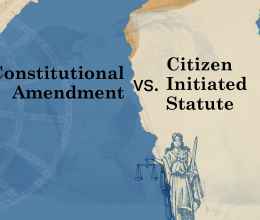October 10 marks World Day Against the Death Penalty. This year, the annual observance day comes on the heels of five recent executions that were carried out in the span of a week, a stark reminder of how prevalent use of the death penalty still is in our country.
Many may have heard about the execution of Marcellus Williams (who went by Khalifah Ibn Rayford Daniels) by the state of Missouri; he was executed despite objections from the St. Louis County prosecutor and calls from the victim’s family to spare his life, resulting from legitimate claims about his innocence.
Four other individuals were executed in the same week: Freddie Eugene Owens (who went by Khalil Divine Black Sun Allah) by South Carolina, Travis Mullis by Texas, Emmanuel Littlejohn by Oklahoma, and Alan Eugene Miller by Alabama.
Though it may feel shocking to see this number of executions in such a short time span, it is not surprising. Twenty-one states are still carrying out executions, and 27 still have a capital punishment statute on the books.
Six states, including Ohio, have paused executions via an official or unofficial moratorium. Specifically in Ohio, Gov. Mike DeWine paused executions because pharmaceutical companies threaten to block the sale of all their products to states that use them for executions by lethal injection.
Nonetheless, the 21 states actively utilizing the death penalty press forward with executions despite declining public support for capital punishment nationwide.
The six moratorium states have not taken the critical step of repealing their capital punishment statutes. Here in Ohio, we know from polling released early this year that fully 56% of Ohioans support replacing the death penalty with a sentence of life without parole.
We also know the following:
- 11 people have been exonerated from Ohio’s death row, a substantial proportion of the 200 exonerations nationwide. Put a different way, the state very nearly put to death 11 innocent human beings, but for various evidentiary and procedural errors that were discovered.
- Per the most recent data available from the Ohio Department of Rehabilitation and Correction (ODRC), Black Ohioans make up well over half of death row. This reflects the death penalty’s place in our criminal legal system as an outgrowth of the horrific, racist lynchings of our past.
- ODRC’s data also demonstrates that geography plays a role in death sentences. The vast majority of death row inmates come from a handful of Ohio counties, which reflects the uneven arbitrariness of how our capital punishment statute is applied.
- According to a review of available cost data from the nonpartisan Legislative Service Commission, death penalty cases may cost between $1 million and $3 million more than life imprisonment cases. Multiplied by Ohio’s death row population, pursuing death sentences for those inmates may cost the state an additional $121 million to $363 million.
- Many family members of murder victims, or co-victims, are re-traumatized as capital cases play out and do not want the death penalty to be pursued on their loved one’s behalf.
The status quo is deeply flawed, but we have solutions on the table.
Right now, there are companion Ohio House and Senate bills to abolish the death penalty pending in the General Assembly.
Ohio cannot consciously keep capital punishment on the books, despite the misguided determination of some high-profile elected officials to resume executions.
Earlier this year, Ohio Attorney General Dave Yost pledged his public support for other legislation, House Bill 392, that would allow for a new, torturous execution method in Ohio.
This legislation, sponsored by state Reps. Brian Stewart and Phil Plummer, would allow Ohio to adopt “nitrogen hypoxia” (a term coined for death by nitrogen gas suffocation) as an execution method.
Of course, the adoption of a new execution method would do nothing to resolve any of the above flaws in the capital punishment system.
We are witnessing the absence of urgency on this issue because of the unofficial moratorium on executions. In fact, Gov. DeWine pointed to a lack of “any kind of sense of urgency to take action in this area” to explain why the abolition bills — Senate Bill 101 and House Bill 259 — remain in limbo.
There is a lesson to be learned from those five states that recently carried out executions: We simply cannot afford to wait until the concrete and final sense of urgency an upcoming execution poses. In fact, now must be the time to act, when the state of Ohio is not at imminent risk of executing anyone.
Our elected leaders have the responsibility and the moral imperative to abolish this unjust, ineffective, costly, and racist system before a time comes when the Governor’s unofficial moratorium no longer is in place.
On World Day Against the Death Penalty, we, as Ohio residents and voters, must raise our voices in unison to create this sense of urgency. Ohio lawmakers passing SB 101 or HB 259 would provide real justice, not the false justice the death penalty provides.









